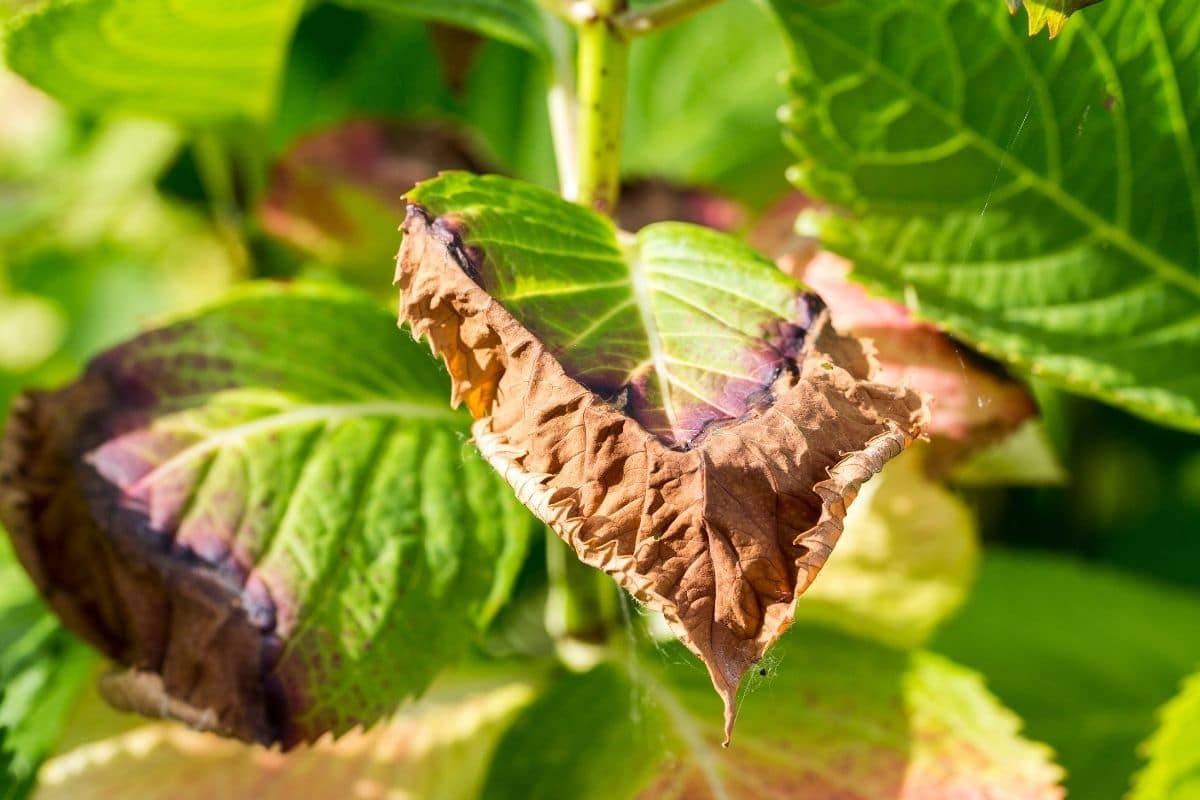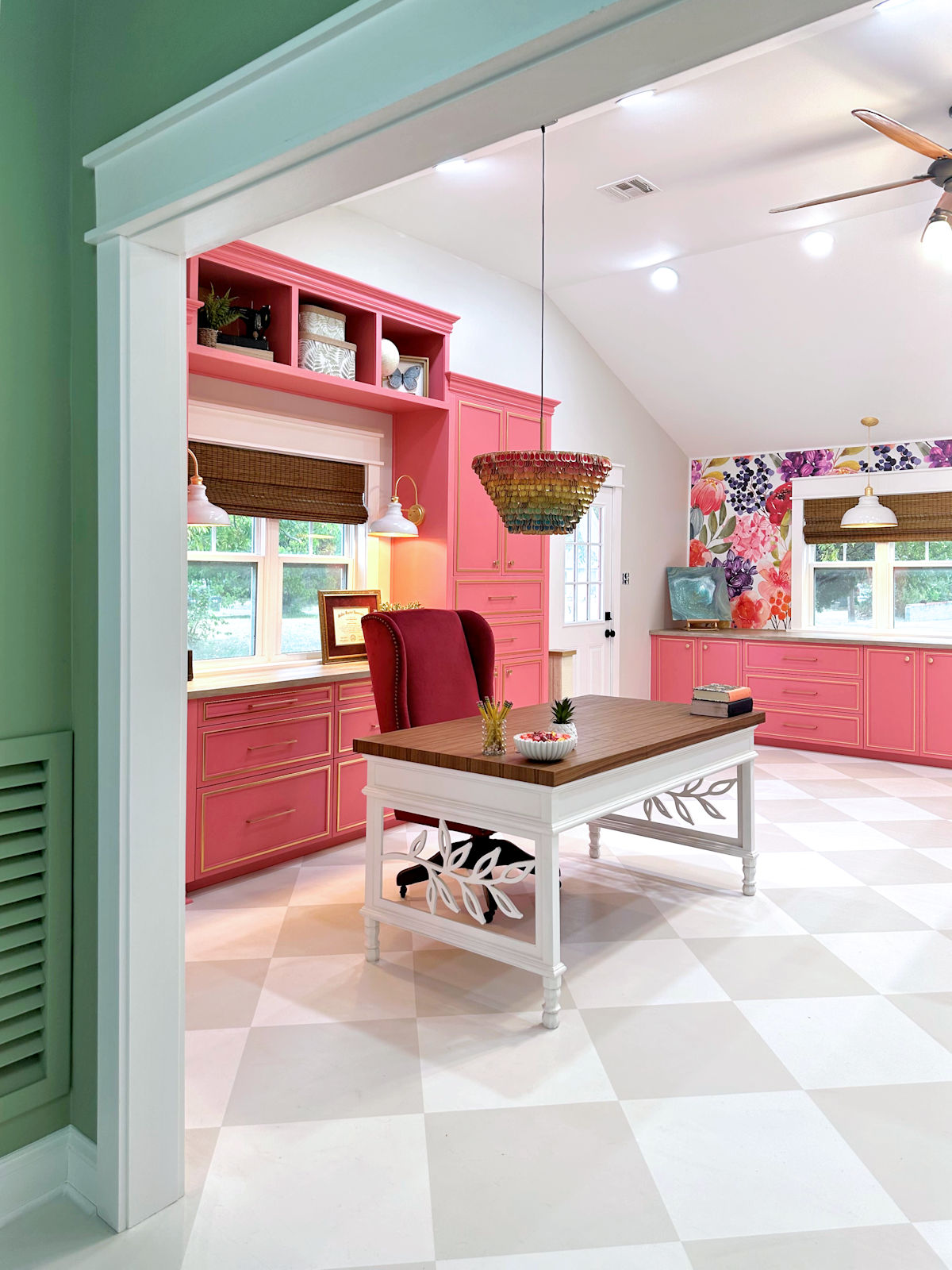Hydrangeas are one of the most popular flowering plants in North America. These bushes bloom with a wide variety of colors and shapes, but they’re not always easy to grow. They need specific amounts of sun and water, so it’s important to know how to keep them healthy year-round!

Also quite popular in the gardening world, hydrangeas come in a variety of colors and shapes, so it is easy to find one with your favorite characteristics. However, like any plant that resides outside for extended periods of time, it can become infested with insects or require an extra bit of care during certain seasons.
Growing up to 15 feet in height, these plants grow rapidly and can fill in an empty space in the garden in the matter of one growing season. They grow best in zones 3 through 7, where they can be grown as perennials, with flowers first appearing in the spring and lasting long into the early fall.
Here are some other tips for growing healthy hydrangeas.
16 Tips for Growing Hydrangeas
1. Know the Best Time for Planting
Believe it or not, spring is not actually the best time to plant hydrangeas, as is the case with many other kinds of flowering ornamental plants. Instead, you should plant in the fall. This will give the plant all the time it needs to set strong, healthy roots before it works on pushing out blooms.
If you can, plant on a cloudy day, ideally one that’s not too hot or windy. This will protect the plant from heat stress at planting time. You should plant either in the early morning or late afternoon when conditions are calm. Keep your plants adequately moist until they are established.
2. Pick the Right Spot
Unfortunately, many people plant hydrangeas in the wrong spot. There are all kinds of excellent places where you can plant your hydrangeas – knowing the ideal location is key. Since they live for such a long time, you’re going to have to choose the perfect location from the very beginning.
Some people plant hydrangeas along the sides of their homes or along a fenceline. This is usually a great choice, since hydrangeas like sheltered locations that offer plenty of sun in the morning and a bit of shade in the afternoon.
Do not plant your hydrangeas beneath a tree as this can lead to competition for both nutrients and water. You also need a location with a bit of shelter, as excessively high winds can damage flowers and leaves.
3. Amend Your Soil
Before you plant your hydrangeas, take some time to amend the soil. Conduct a soil test to determine what nutrients are present in the soil as well as to get an idea of its pH. Drainage is vital for hydrangeas, too. They like moist soil but do not like being overly wet, as this can cause root rot.
Therefore, you may want to take the time to mix in some compost before you plant. Not only can this help balance out nutrient loads and pH, but it can also improve drainage in a very short period of time. Of course, it can also introduce helpful microbes to your soil that will improve the health of your hydrangeas, too!
4. Plant Deeply
When it’s time to plant your hydrangeas, you should dig your planting hole much larger than the root ball – ideally about two feet wider. The depth should be at least the size of your root ball, which will allow the plant to sit just slightly higher than the surrounding soil. When you backfill around your plant, make sure your hydrangea is situated in a bit of a mound. This will help water drain away from the plants so that your roots do not rot.
5. Consider Propagating Hydrangeas
Want to grow additional hydrangeas to enjoy on your property – or perhaps to give to a friend to enjoy? You can propagate both panicle and bigleaf hydrangeas by the process of layering. This method is best done in the early to midsummer months.
Dig a hole near the plant. Tip down the branch that is closest to the ground so it touches the soil about 6-12 inches below where the leaf meets the trunk (3/4 – 2 feet). Scratch into the bark with nearby branches and fill up the hole, then place a paving stone or brick on top for added weight.
Over time, you’ll find that this branch creates its own roots. Then, you may transplant it to its final location.
If you want to propagate oakleaf or smooth hydrangeas, that can be done, too, but in a different way. These plants reproduce via underground stems and shoots – all you need to do is dig up the plant and separate the young birds away from the new plant. You can then transplant it wherever you’d like. Learn what other plants you can propagate from hardwood cuttings.
6. Mulch
Mulch is a great way to keep your hydrangeas hydrated and cool, but if you want the best results for years to come, use organic mulches. These products break down over time adding nutrients that will work wonders on soil texture! Some good options include hay, straw, wood chips, or shredded bark. We have covered a comprehensive mulching guide here.
7. Water Well
As with any garden plant, proper watering is essential for your hydrangeas. Water about one inch per week during the growing season, but up to around three times per week when you have first planted your hydrangeas and are waiting for them to set good roots. You may find that smooth and bigleaf hydrangeas need quite a bit of extra water – however, all kinds of these plants benefit from having consistent moisture.
You may want to use a soaker hose so that you can water from below. This will help keep moisture off the leaves and flowers to prevent a variety of fungal diseases.
8. Don’t Forget to Fertilize
Fertilizing hydrangeas is important, especially if you want to encourage certain traits, like coloration. You will want to research the specific hydrangea variety you have to figure out what kind of fertilizer you need. Each one has different needs and will require different nutrients applied at different times. You can prepare your own organic fertilizers using these recipes.
9. Guard Against Diseases
The good news about growing hydrangeas? They tend to not be susceptible to most pests. You might occasionally notice pests like aphids, red spider mites, and leaf tiers, but as long as you provide your hydrangeas with the proper care, you shouldn’t have to worry too much about these creatures.
You’re more likely to have to worry about disease. Choose cultivars that have resistant traits to various issues like leaf spot, wilt, and blight. Powdery mildew is another common issue.
10. Choose the Right Type
In the United States, there are four primary types of hydrangeas you can grow: bigleaf hydrangeas, panicle hydrangeas, oakleaf hydrangeas, and smooth hydrangeas.
Bigleaf hydrangeas are extremely common, often grown for their colors that you can change more or less on command (more on this below). They are hardy in zones 5-9.
Panicle hydrangeas are also common, hardy to zone 3, so they’re the best for cold-weather gardeners. They grow quickly, easily reaching heights of 15 feet or more.
Oakleaf hydrangeas do best in warmer zones, typically found in climates warmer than zone 5. They can withstand the heat of the summer with ease.
And finally, smooth hydrangeas. These plants are also good for cold climates and produce large clusters of white blooms (they look just like snowballs!).
Some common varieties of hydrangeas that you can find at most gardening stores or nurseries include:
Endless Summer hydrangea
Pink hydrangea
Blue hydrangea
Peegee hydrangea
Lacecap hydrangea
Mophead hydrangea
French hydrangea
Limeweight hydrangea
11. Don’t Feel the Need to Prune
Hydrangeas don’t need to be regularly pruned. As long as they’re given space to sprawl, they’ll grow healthy and strong. That said, you may want to occasionally remove dead wood, ideally in the spring after you notice winter damages.
12. Deadhead Often
Hydrangeas should be deadheaded to keep them blooming into the fall. You can either remove wilted blooms or go ahead and cut blossoms for cut flowers indoors. Just let early fall blossoms stay in place to fade – encouraging new growth close to the first frost can harm your plants.
13. Control for Color
One of the most enjoyable reasons to grow hydrangeas is that you can easily adjust their color – at least, for some varieties. Bigleaf hydrangeas are often selected by gardeners because they react to changes in soil pH. If you have a low soil pH, this will cause your flowers to bloom blue (since the plants can absorb more aluminum).
If you increase the pH by adding things like ground limestone, your flowers will instead be bright pink or red. You can lower the pH, as an alternative, by adding things like aluminum sulfate, peat moss, or sulfur.
Not sure what your pH might be before you plant? Go ahead and test the soil. This will give you an idea of what you’re working with so you know what color your flowers will be. In any case, avoid elevating the soil pH to anything above 7.5. This can damage your plant.
14. Don’t Be Afraid of a Bit of Shade
A common misconception about hydrangeas is that they need to be grown in bright, direct sunlight. That’s not the case. In fact, hydrangeas like a bit of morning sun but prefer shade in the hot afternoon hours.
You can also grow hydrangeas in dappled or occasional bits of shade. Just bear in mind that they don’t bloom in heavy shade. About six hours of sunlight per day is ideal for hydrangeas, but those that are growing in hot climates can tolerate around half of that. Learn more about shade-tolerant plants.
15. Consider Growing in Pots
You can even grow hydrangeas in containers. You’ll follow most of the same tips for growing and caring for your plants as you would if you were growing them in the ground. Just make sure you choose a pot that is large enough to hold your hydrangea – around 18 inches in diameter is perfect.
You will also want to choose a container that isn’t super porous – this can help it retain moisture better. Unfortunately, hydrangeas are known for struggling to hold consistent levels of moisture. That said, a pot with adequate drainage holes is still necessary so that excess water can drain.
For containers, regular watering and fertilizing is essential. You may also want to consider growing dwarf hydrangea cultivars like Little Lime, Buttons ‘n Bows, and Mini Penny. You can easily propagate them from hardwood cuttings.
16. Take Steps to Avoid Wilting
Although hydrangeas tend to be quite hardy, they do occasionally wilt in the hot summer sun. To avoid this, water regularly, ideally first thing in the morning.
Unfortunately, there are some varieties of hydrangeas that will wilt no matter how much water you give them. Because of this, you’ll need to find creative ways to retain moisture and keep the soil cool. Adding mulch can help.
Ultimately, know that there are some situations in which wilting can’t be avoided. If you find that your hydrangeas perk right back up as soon as the day cools off, don’t worry – a bit of midday wilt is nothing to worry about!
Caring for Hydrangeas
The hydrangea is a beautiful, delicate bloom that can easily be over-watered and killed. If you take care of them properly though, they will stay healthy and vibrant for years to come! Keep these tips for healthy hydrangeas in mind and you’ll have beautiful blooms forever. Discover other purple flowering shrubs that go well with hydrangeas.
































